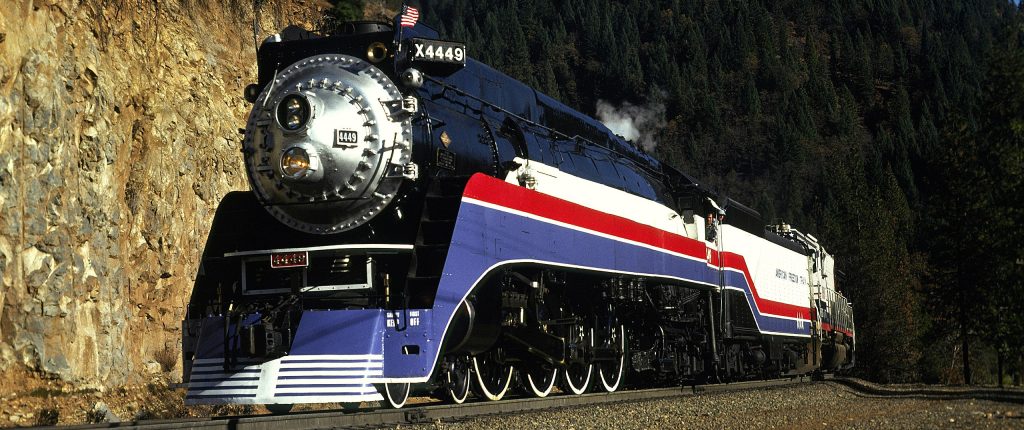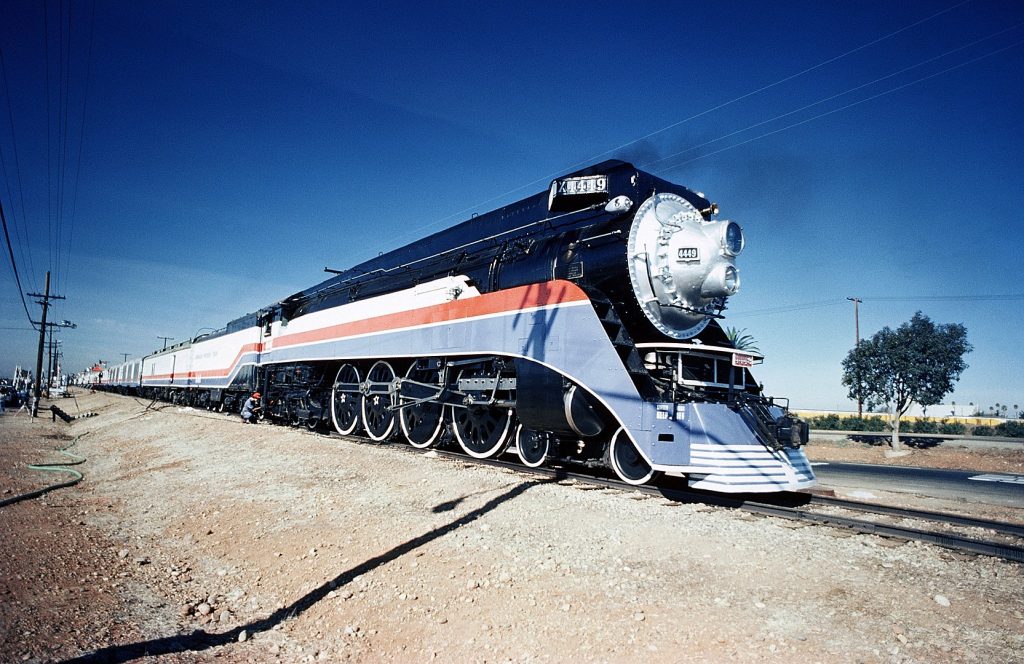The American Freedom Train was a unique and ambitious project undertaken in 1975 and 1976 to celebrate the 200th anniversary of the United States’ Declaration of Independence. This extraordinary train, carrying a priceless collection of historical artifacts, traversed the nation, offering Americans a chance to connect with their past and celebrate their shared heritage.

Drew Jacksich, San Jose, CA. Licensed under the Creative Commons Attribution 2.0 Generic license.
Conceived by the American Revolution Bicentennial Administration (ARBA), the Freedom Train was more than just a locomotive pulling a few cars. It was a meticulously planned and executed exhibition on wheels, a traveling museum showcasing the nation’s journey from its founding to the modern era.
The train itself was a fascinating example of railroad engineering. It consisted of 20 stainless steel cars, each designed to highlight a specific theme. One car showcased documents like the Declaration of Independence and the Constitution, along with artifacts related to the American Revolution. Another explored the expansion of the United States westward, showcasing Native American artifacts, pioneer life, and the development of transportation. Several cars delved into the evolution of American democracy, featuring exhibits on the Civil War, civil rights movements, and the contributions of diverse communities. Still others celebrated American ingenuity and innovation, showcasing advancements in science, technology, and industry. And finally, a car called The Promise of the Future offered a vision of the future, exploring themes of space exploration, environmental conservation, and the challenges and opportunities facing the nation.
The American Freedom Train was a treasure trove of historical artifacts, including George Washington’s personal Bible, Thomas Jefferson’s personal desk and chair, Abraham Lincoln’s top hat, The Wright brothers’ first airplane, and Neil Armstrong’s spacesuit. The American Freedom Train was not just a collection of exhibits; it was a spectacle of power and nostalgia, pulled by a series of iconic steam locomotives. These magnificent machines, relics of a bygone era, added a dramatic flair to the train’s journey, evoking a sense of grandeur and connecting visitors with the nation’s industrial past.
Several powerful steam locomotives took turns leading the Freedom Train across the country. One of the most prominent was Reading Railroad’s T-1 class 4-8-4 steam locomotive #2101. This powerful machine, restored to its former glory, symbolized the American spirit of innovation and engineering. Its massive size and impressive display of power captivated audiences at every stop.

The American Freedom Train waiting at the Naval Air Station in Miramar, California, on January 15, 1976. PH2 Masnica, U.S. Navy. Public Domain
Other locomotives that pulled the Freedom Train included a Texas & Pacific 2-10-4. This powerful locomotive, restored in Fort Worth, Texas, led the train through the Lone Star State. The use of steam locomotives was a deliberate decision. It added a touch of historical authenticity to the Bicentennial celebration and provided a powerful visual reminder of the role railroads played in shaping the nation’s history. The sight of these majestic machines, billowing smoke and pulling the train through towns and cities across America, created a lasting impression on millions of people. As well, a series of specially painted Burlington Northern Bicentennial Locomotives, including numbers 1776, #1876, #5745, #5747, and #6907, were used during various legs of the journey, further enhancing the celebratory atmosphere.
The Freedom Train embarked on its journey on January 8, 1975, beginning in Philadelphia, Pennsylvania, the birthplace of American independence. Over the next 18 months, it traveled more than 21,000 miles, visiting 300 cities and towns across the United States. Millions of Americans, from schoolchildren to senior citizens, including yours truly, eagerly lined up to experience this unique and moving exhibition.
The impact of the Freedom Train was profound. It served as a powerful reminder of the nation’s shared history and the values that have shaped its identity. It fostered a sense of national unity and pride, reminding Americans of their common heritage and the sacrifices made by previous generations. The Freedom Train also played a significant role in revitalizing interest in American history. It inspired countless individuals to learn more about their past, visit historical sites, and engage in discussions about the nation’s journey. The train’s educational programs, including teacher workshops and student activities, helped to bring history to life for millions of young people.
However, the Freedom Train was not without its challenges. Security concerns were paramount, given the valuable and irreplaceable artifacts on board. The train was heavily guarded by a team of security personnel, including Secret Service agents, highlighting the immense pressure and responsibility associated with safeguarding such a precious collection.
The American Freedom Train ultimately proved to be a resounding success. It was a testament to the power of history to inspire and unite a nation. Although the train itself has long since been retired, its legacy continues to live on. The artifacts it carried remain on display in museums across the country, serving as reminders of the nation’s rich and complex past. The Freedom Train stands as a unique and enduring symbol of American history, a testament to the power of shared experience and the importance of preserving our heritage for future generations.
